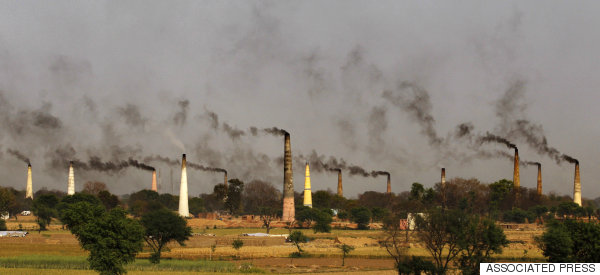Is India Growing At The Cost Of The Environment?
Posted:
Updated:
Our rivers are just as polluted, with many stretches (particularly in and around the cities) becoming dry in lean season. The garbage in cities is growing by the day, with worrying increases being seen in plastic waste and e-waste; the scarcity of landfill sites poses another challenge.
Water scarcity is fast becoming urban India's major concern, with residents having to deal with depleting supplies due to falling groundwater levels, vanishing water bodies, severe pollution and urban floods. Further, a large number of people depend on the land, the forests and the water around them for their livelihood, but the population growth along with the increased urbanisation has led to deterioration of these resources and the environment, threatening their livelihoods.
This deterioration is also taking its toll on the people's health and productivity. A recent study conducted by the HEAL Foundation and Breathe Blue, shows that around 35% of school going children in India suffer from poor lung health. Pollution is one of the major factors in determining lung health in children.

So, are we witnessing a trade-off between environmental protection and development? Is development taking place at the cost of ecology or causing widespread environmental destruction and violation? Or can both development and environment go hand in hand if we can bring about "prudent" and "equitable" utilisation of natural resources, and if we integrate environmental considerations into economic and other development plans, programmes and projects?
India has certainly made efforts to integrate the two. We have improved the quality of the fuel running our vehicles, and changed not only emission standards, but also set up institutions to regulate industrial emissions. We have invested in building sewage treatment plants to deal with water pollution. We have taken positive steps for sustainable waste management by enforcing better PPP contracts and investing in modern technology for transportation, processing and disposal.
"We often find communities embracing the benefits of development and ignoring the negative impacts, at best seeing them as problems that the government needs to address."
In a democratic country such as India, public perception, opinion and response also hold a high value, especially for policy makers and politicians, leading to more informed decisions, improved design, effective policies and better acceptance and implementation of policies.
Further, the behaviours and actions of the residents play an important role in promoting sustainable standards of living. Lack of community input and involvement in environmental and resource policy development and management creates community indifference to environmental issues. We often find communities embracing the benefits of development and ignoring the negative impacts, at best seeing them as problems that the government needs to address.
The government, in turn, may have little knowledge of the priorities of the communities and the degree to which the public recognises environmental concerns to have direct implications on the quality of their lives. In fact, The Energy and Resources Institute (TERI) conducts anannual environmental survey in selected cities in India with an objective to assess people's perceptions, behaviour, awareness and opinions towards the environment and its related indicators such as air and water quality, waste and waste management, water pollution and conservation and contribute in a modest way to understanding the realities underlying what people feel about the environment.
Engaging communities and encouraging their participation in the policy-making process, having transparency in environmental management, ensuring strict compliance to environmental and forest clearance conditions and adopting market-based instruments can help us to do things differently to reinvent the development process. We need to internalise negative externality of pollution. People need to be more aware, to behave in a responsible manner and to participate in the reinvention process.
No comments:
Post a Comment